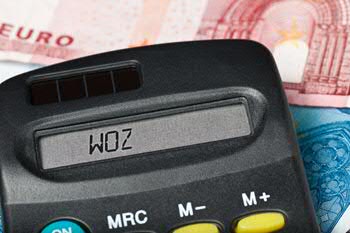Households pay € 12 more to municipalities
In 2015, households will pay an average of € 12 more in housing levies to municipal authorities than in 2014. This translates as an average of 1.7 percent, which constitutes a slight rise. The figures come from the Atlas of Local Costs, which was presented today by COELO, the Local Government Economics Research Centre, a research institute attached to the University of Groningen.

The municipal housing levies charged to home-owners are made up of property tax, waste collection levies and sewerage charges. In 2015, households will pay an average of 1.7 percent more than in 2014. This rise is slightly above the rate of inflation (which is approximately 1 percent). On average, multiperson households will pay € 716 to their municipality this year. Aalten is the cheapest at € 520, Blaricum the most expensive at € 1,198.
Property tax
An average household will pay € 263 in property tax, which is € 7 more than last year. Property tax is only charged to owners, not to tenants. Residents of Texel pay the least (average € 118), and people in Blaricum pay the most (€ 688). The average rate of tax on properties has risen by 2.8 percent. At 44 percent, the rise is highest in Muiden. The municipality has this year applied for Article 12 status, which is a way of applying for extra funding when a municipality finds itself in dire financial straits. The municipality is expected to raise its rate of property tax before being considered for assistance. The property tax rate in the Hardinxveld-Giessendam municipality has dropped (11 percent). The revenue from property tax in 2014 was higher than expected and the excess is now being returned to the taxpayers.
Exceeding the property tax macro standard
Municipalities are entitled to set their own rate for property tax. The Association of Netherlands Municipalities (VNG) has an ongoing agreement with the Dutch government about the maximum permitted rise in national revenue from property tax. This is known as the ‘macro standard’. This year, property tax revenue is set to exceed this standard. Municipalities are generating € 44 million more than agreed. But is this necessarily a bad thing? Property tax is relatively minor, accounting for just 1.6 percent of the national tax revenue. Exceeding the macro standard only increases the total Dutch tax revenue by 0.0183 percent more than was intended.
Waste collection levies
This year, waste collection levies have risen by an average of 0.6 percent (€ 1.47), which is below the rate of inflation. The average bill to households is € 263, and the growth rates vary per municipality. The rate in Muiden has dropped the most, by 18 percent, as m oney refunded to Muiden by the waste collection company is being returned to the residents. The rise in Eemsmond is the highest at 71 percent. Even so, the rate in Eemsmond, where a multiperson household pays € 82, is still the lowest. This is because much of the cost of waste collection is paid for from other sources of revenue (property tax). Multiperson households in Wassenaar pay the highest rate (€ 433).
Sewerage charges
Sewerage charges have risen by an average of 1.9 percent (€ 3.54) this year. Multiperson households pay the least in Veenendaal (€ 79), and the most in Zwartewaterland (€ 375). The average rate is € 189. The rise in Lelystad is the highest at 79 percent. Until 2015, Lelystad paid for much of its sewerage costs from other sources of revenue. The municipality has made changes and from now on, all sewerage costs must be paid for from the proceeds of sewerage charges. Veendam is one of the places where the rate has dropped (43 percent). This is because some of the sewerage costs in 2015 will be charged to reserves.
Tourist tax rises by 4 cent
In addition to housing levies, municipalities are authorized to raise other taxes. On the whole, the revenue from these taxes is considerably lower than from property taxes. Tourist tax is good example. Seventy-eight percent of municipalities charge tourist tax. The rate has risen by an average of 4 cents per night (2.3 percent), but the rise varies from one municipality to another. The sharpest rise is in Brielle, where the rate has risen by 121 percent (82 cents). Despite this apparent steep rise, tourist tax rate in Brielle in 2015 is still below the national average. The rate in Amsterdam dropped by 6.5 percent (33 cents). The municipality had temporarily raised the rate in 2013 and 2014, and the figure has now been adjusted. Two municipalities have introduced tourist tax and two have withdrawn it.
Rise in dog licence fees below inflation
Dog licence fees are another type of tax enforced by municipalities. At present, 267 of the 393 municipalities (68 percent) raise levies via dog licences. No municipalities have introduced dog licences for the first time this year, but 5 municipalities or submunicipalities have withdrawn them. On average, dog licence fees have risen by 0.9 percent. The fee dropped most sharply in Drimmelen (50 percent). The municipality intends to withdraw dog licences altogether in the long term. The fee rose by 28 percent in Landsmeer, where the municipality is trying to raise extra revenue. The municipality decided to raise this fee on realizing that it was low compared with the other municipalities with which Landsmeer cooperates.
More information
More information: Corine Hoeben, tel. +31 (0) 50 3633766, e-mail coelo@rug.nl.
Many of the current tax rates can be found on: www.coelo.nl.
M.A. Allers, C. Hoeben, L. Janzen, K. Kwakkel, J.B. Geertsema, and J. Veenstra, Atlas van de lokale lasten 2015, Monitor van de ontwikkeling van de lokale lasten op macro- en microniveau. COELO, Groningen, ISBN 978 90 76276 89 2.More news
-
15 September 2025
Successful visit to the UG by Rector of Institut Teknologi Bandung
